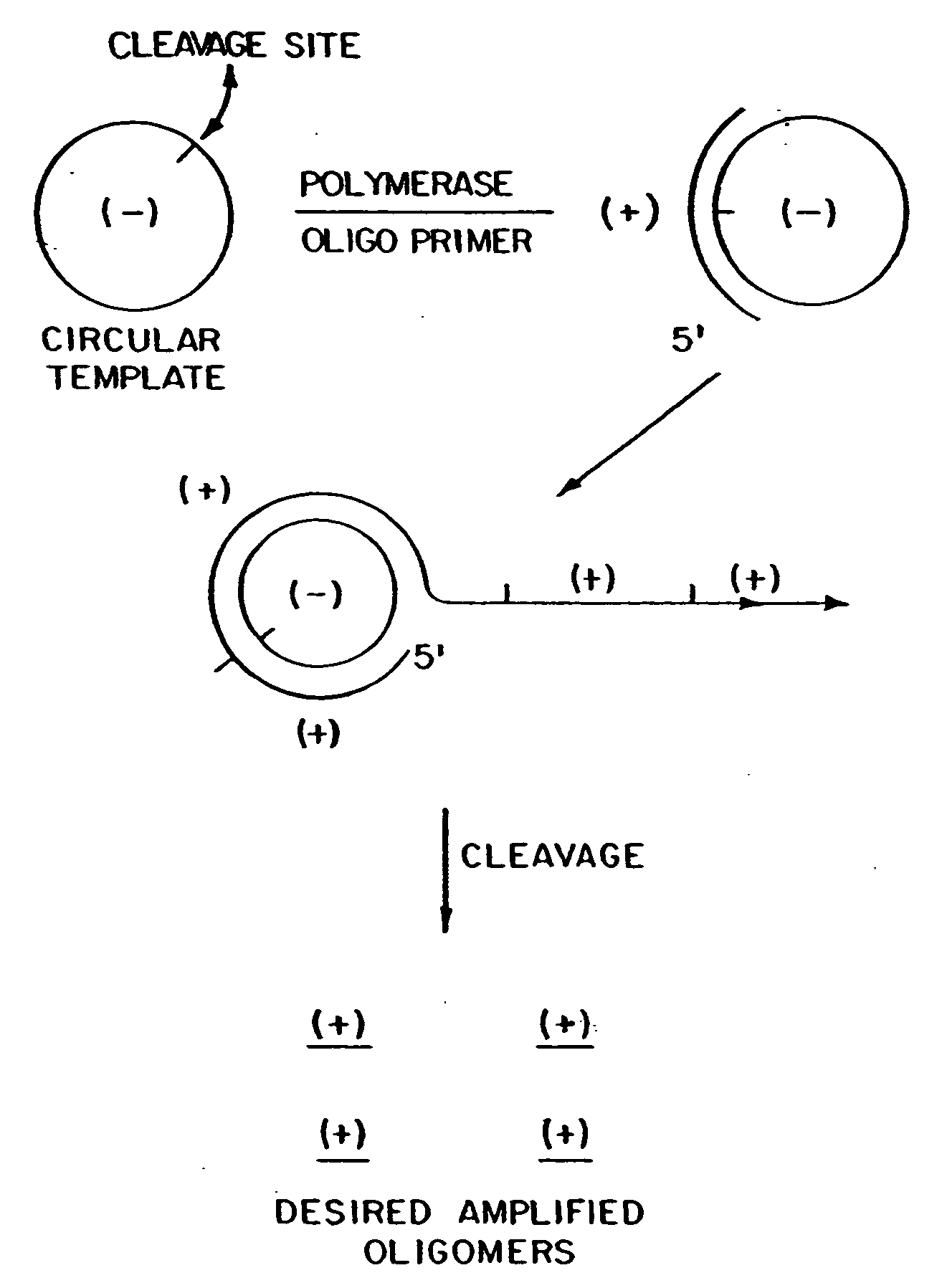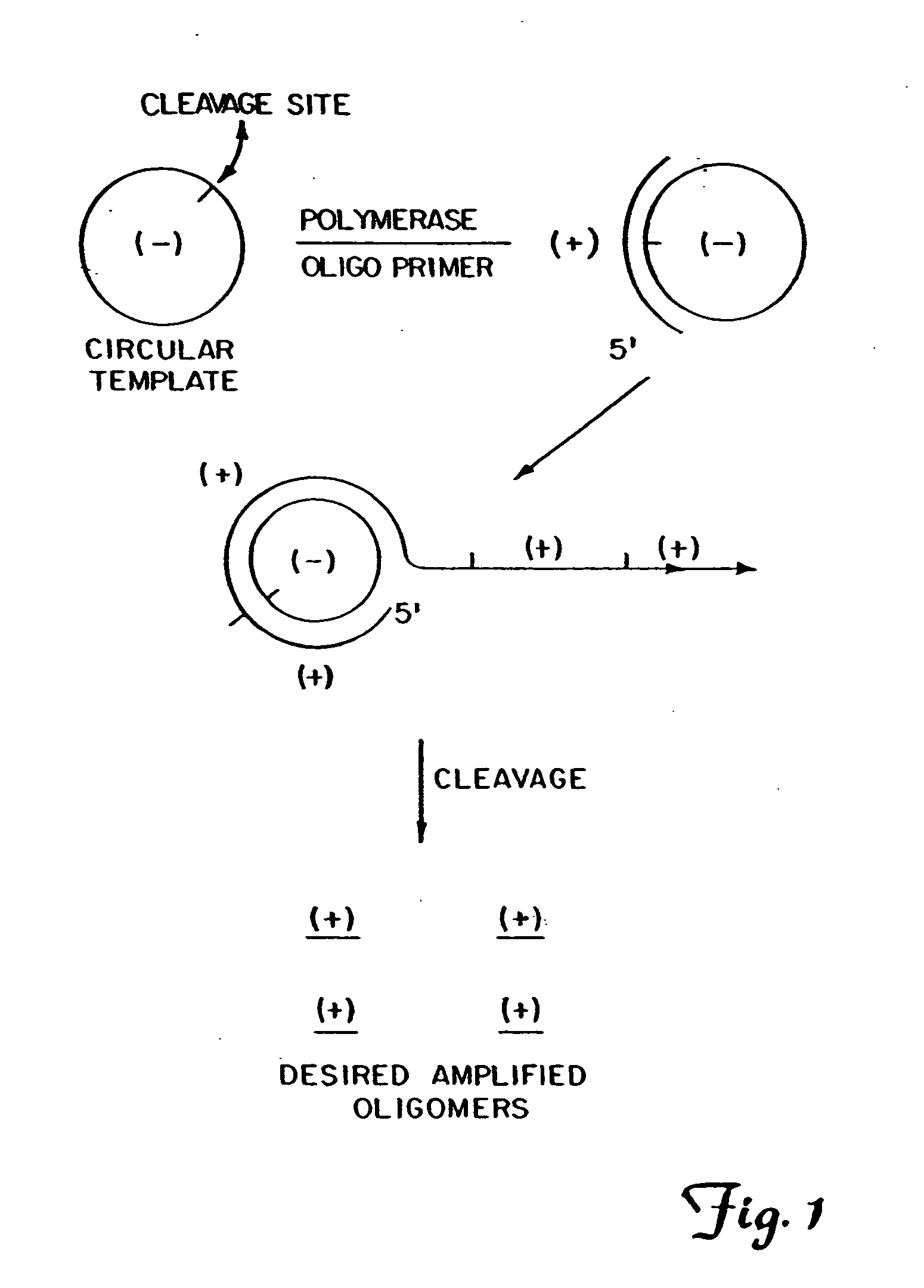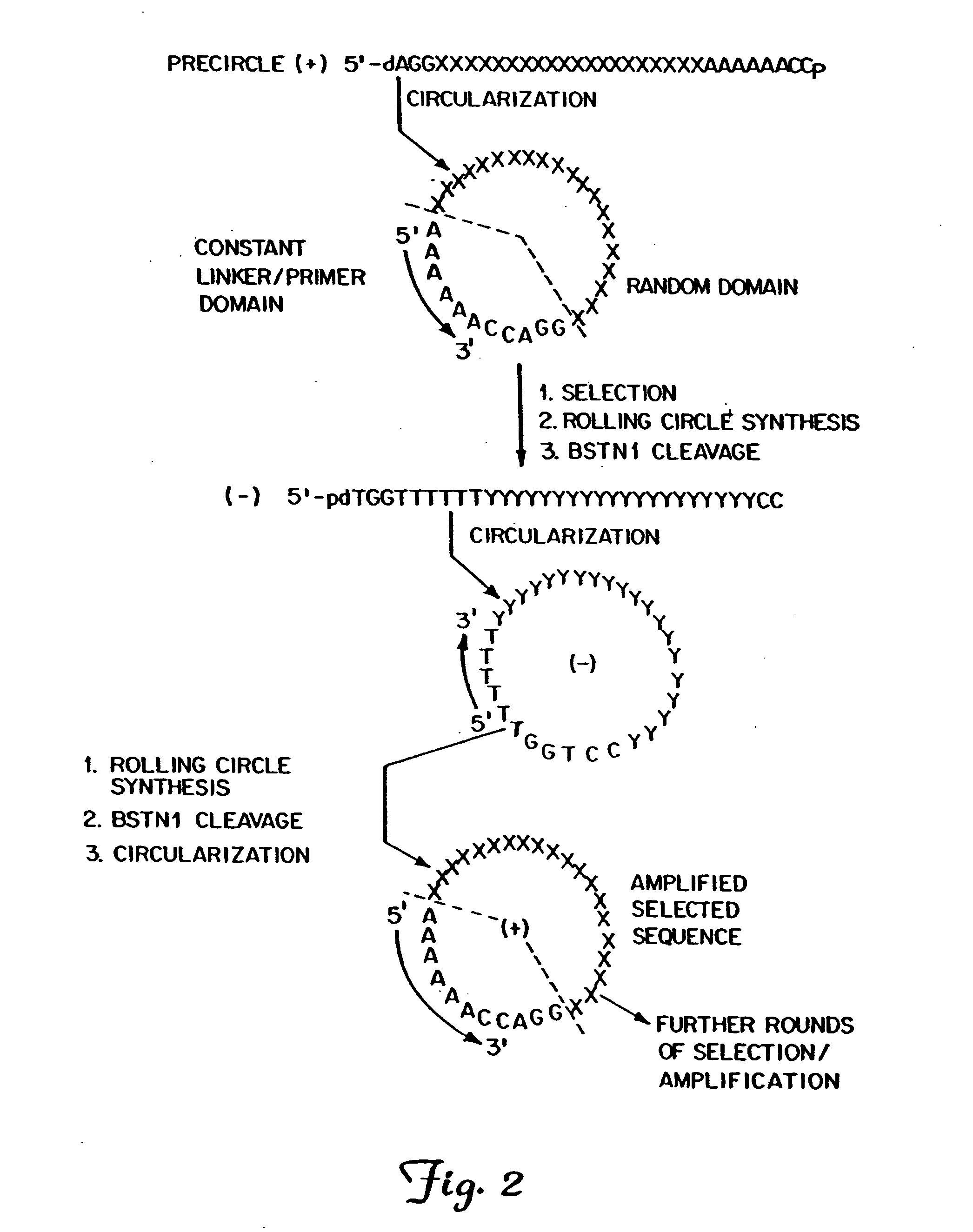Circular DNA vectors for synthesis of RNA and DNA
a synthesis and vector technology, applied in the field of synthesis and therapeutic use of dna and rna oligonucleotides and analogs, can solve the problems of high cost of synthetically modified monomers, high cost of oligonucleotide synthesis by machine using the standard solid-phase synthetic method, and significant in vivo testing of anti-sense oligomers. high cost, the effect of low cos
- Summary
- Abstract
- Description
- Claims
- Application Information
AI Technical Summary
Benefits of technology
Problems solved by technology
Method used
Image
Examples
example 1
Synthesis of a 34-nt DNA Oligomer
[0113]A linear 34-nucleotide (34-nt) precircle DNA oligonucleotide having the sequence (SEQ ID NO:1):
5′-pAAAGAAGAGG GAAGAAAGAA AAGGGGTGGA AAAG,
was machine synthesized on a Pharmacia LKB Gene Assembler Plus using standard β-cyano-ethyl phosphoramidite chemistry as disclosed in S. L. Beaucage et al., Tetrahedron Lett., 22, 1859 (1981), which is incorporated herein by reference. This precircle template is complementary to the desired oligomer. The sequence of the desired oligonucleotide product is (SEQ ID NO:2):
5′-pTTTTCCACCC CTTTTCTTTC TTCCCTCTTC TTTC,
which has an MnlI enzyme cleavage site at its end. Using this enzyme, a polymeric version of this oligomer, i.e., a multimer, can be cut into oligomers having this sequence. A ligation adaptor, 5′-TTTTCTTTCTT (SEQ ID NO:27), was also machine synthesized, as described above. This was also used as the primer oligomer.
[0114]The precircle template (100 nmol) was cyclized into the template circle (SEQ ID NO:3)...
example 2
Synthesis of a Linear Oligomer of Sequence dT12
[0119]The circular template used for the synthesis of the sequence 5′-pdTTTTTTTTTT TTp (SEQ ID NO:7) is (SEQ ID NO:5):
A A A A A A A A A C A AA A A A C A A A A A A A A A
The precircle sequence used to synthesize this circular template is 5′-dCAAAAAAAAA AAACAAAAAA AAAAAAp (SEQ ID NO:5). The primer / adaptor sequence is 5′-dTTTTGTTT. The circular template is constructed from the linear precircle and the adaptor using BrCN / imidazole under high dilution. Alternatively, the circular template can be constructed using 1-(3-dimethylaminopropyl)-3 ethylcarbodiimide HCl under the conditions described in Example 1.
[0120]For the rolling circle synthesis of the desired oligonucleotide product, only two triphosphates, dTTP and dGTP, are used following the conditions described in Example 1. Workup can be done by polyethylene glycol (PEG) precipitation. The product formed is the multimer 5′ . . . ...
example 3
Synthesis of dAAGAAAGAAA AG
[0121]A schematic of the synthesis of the linear sequence 5′-pdAAGAAAGAAA AG (SEQ ID NO:8), is shown below in Scheme II. In this example, a partially self-complementary sequence was included in the circular template. No adapter was needed for cyclization because the molecule is self-complementary. The method for cyclization used is described in G. W. Ashley et al., Biochemistry, 30, 2927 (1991), which is incorporated herein by reference. The multimer was synthesized as described in Examples 1 and 5. The multimer product can be cleaved with BsmAI restriction enzyme, which removes the hairpins, leaving the desired product oligomer as the 5′-phosphate. Note that the product oligomer contains no restriction enzyme sequences.
PUM
| Property | Measurement | Unit |
|---|---|---|
| reaction time | aaaaa | aaaaa |
| temperature | aaaaa | aaaaa |
| temperature | aaaaa | aaaaa |
Abstract
Description
Claims
Application Information
 Login to View More
Login to View More - R&D
- Intellectual Property
- Life Sciences
- Materials
- Tech Scout
- Unparalleled Data Quality
- Higher Quality Content
- 60% Fewer Hallucinations
Browse by: Latest US Patents, China's latest patents, Technical Efficacy Thesaurus, Application Domain, Technology Topic, Popular Technical Reports.
© 2025 PatSnap. All rights reserved.Legal|Privacy policy|Modern Slavery Act Transparency Statement|Sitemap|About US| Contact US: help@patsnap.com



